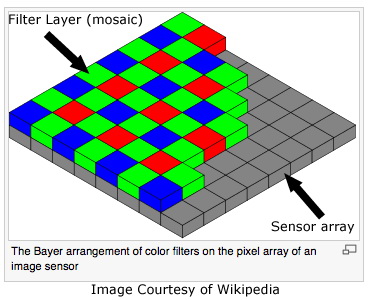Does Ultra HDTV signal the end of three-sensor cameras?
In the coming world of 4K and 8K resolution video cameras, a tried and true technology — the three-sensor camera — may fall to the wayside in favor of more cost-effective single-sensor image-making tools.
In a pre-NAB column in the Executive HDTV Report, Tore B. Nordahl suggests that three-sensor CCD and CMOS cameras are impractical and too expensive for producing ultra high-definition (UHD) television. The market, he predicts, will shift to a single-sensor Bayer color filter array configuration.
Quoting a recent SMPTE Motion Imaging Journal report on a 33 megapixel three-sensor CMOS 8K camera, Nordahl noted that it weighed 143lbs and consumed 300W of power. “Although a 4K 3xCMOS version will weigh less and consume less power than this 8K camera, it will be much larger, heavier and much pricier than a high performing single-sensor 4K (camera),” he wrote.

All future ultra high-definition cameras need to deliver live RGB output (or derivatives YCC) in one form or another, as uncompressed UHD new format stream on “5Gbps certified” BNC/coax and/or on new extended version HDMI, and compressed H.265 IP centric, Nordahl wrote.
Noting that ASIC video processing power (such as JVC’s Falconbird chip) can now provide cost-effective real-time interpolation from RAW to RGB and YCC internal to the UHD camera/recorder, as well as compression, Nordahl said many of the future UHD camera models may be universally used in television as well as in commercial production and digital motion picture shoots.
“And there is a rich and versatile ‘software library’ of ways to interpolate and process the RAW data by dozens of capable companies, developed over years of Bayer sensor use, whether resident in a camera, in a external recorder/ processor or in an external workstation to achieve color correction, artistic control and conversion to RGB/YCC,” Nordahl said.
Nordahl predicts that by 2015, new professional cameras will nearly all feature a single-sensor type design, with full resolution (raw, uncompressed) live output.
The professional video industry's #1 source for news, trends and product and tech information. Sign up below.
